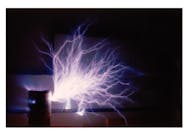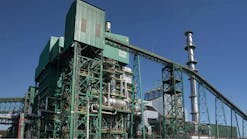Dust-free mechanical handling of bulk solid materials
Dust emissions have always been a cause for concern when handling bulk materials because they can reduce profits from operations, generate environmental issues, be the source of health issues and cause explosions. This article will focus primarily on mechanical conveying and design considerations for the efficient prevention of dust emissions, assuming the design basis is to handle a toxic material where no dust emissions are allowed.
The first step in keeping the material inside the equipment is to ensure there are no gaps from which it can escape. This may seem trivial, but it is at the core of dusting issues. To seal in dust, consider that:
- Almost all mechanical conveyors have a drive shaft coming out of the casing. Numerous types of seals are available to ensure that material remains inside the casing, and high-quality seals should be used for toxic materials. All seals need maintenance at some point; preventing material from compressing against a seal is a good way to minimize wear.
- Many types of conveyors have a cover or hood. They usually arrive from the factory with gaskets or silicone seals. Initially, the bolt or clamp pattern on these covers is sufficiently tight. Often, however, after the equipment is opened for maintenance, some of the bolts or clamps are not put back, which creates an avenue for dust to escape. To keep the hood or cover tight, inspect, repair and clean the gaskets before putting them back and be sure to use all the supplied bolts or clamps.
- Properly seal inspection doors to keep them dust tight.
The second step in keeping material out of the ambient air is to use a dust control/extraction system that draws particulates into a filter and discharges clean air into the workspace. Material flow and movement of mechanical components in the equipment can generate positive pressure that will blow dust out through any gaps that are not properly sealed. When zero dust emissions is the goal, dedusting with enclosed equipment should be non-negotiable.
Dedusting considerations include the following:
- The dust collection airflow in the conveyors must be sized considering that the seals may not be perfect or that the inspection doors may be opened, as these conditions add to the overall dedusting airflow requirement.
- It is common practice for rooms or areas of the plant in which toxic materials are handled to be completely sealed and under negative pressure to contain any dust leaks.
Process controls also play an important role in preventing dust emissions. Equipment and silos should not be fed more than their design capacities.
Dust-free mechanical conveying options
Numerous types of mechanical conveyors can transport bulk materials in a dust-free manner. The following is a high-level, generic list to consider:
Vibrating conveyors. Vibrating conveyors are similar to vibrating feeders, which are often used to extract material from bins and silos, but vibrating conveyors are used to transport material over short distances (usually under 40 feet). A vibrating conveyor typically consists of a vibrating pan or pipe and can be made dustproof with the use of a cover and flexible connections at the feed and discharge points. It can handle small and large capacities of free-flowing material, and its design makes it very robust and resistant to abrasion from the material.
Drag conveyors. Drag conveyors are usually associated with applications handling more sluggish or hot materials in industrial applications, but they can be used to prevent dust emissions, especially if some sort of direction change is required in the vertical plane.
Tubular drag conveyors. If a low-capacity application requires directional changes in the vertical or horizontal plane over a relatively small distance, the tubular drag conveyor is a good candidate to consider. It consists of circular paddles linked by a steel cable or chain that are pulled through a fully enclosed pipe. These conveyors have limited possibilities for leakage, as their casings are flanged pipes.
Aeromechanical conveyors. Aeromechanical conveyors are similar to tubular drag conveyors, but they run faster, so instead of pushing the material with the discs, the quickly moving discs create an air stream that entrains the material.
Screw conveyors. Screw conveyors are a workhorse in many process plants and can be dust-free if all the cover bolts are tight and the seals installed. They have the disadvantage of being limited in length when dealing with abrasive materials, because longer screws require hanger bearings, which should be avoided with such materials. Flexible models are usually made using a single-piece trough, which minimizes the potential for dust emissions.
Air-supported belt conveyors. An air-supported belt conveyor is basically a belt conveyor in which the carrying and return idlers have been replaced by an enclosed plenum. Pressurized air is forced into the plenum and comes out of small holes below the belt, so the belt slides on a cushion of air, like the puck on an air hockey table. This technology eliminates idler maintenance and is dustproof by design. The air-supported belt conveyor is an interesting technology for medium to high tonnages that need to be handled over a somewhat long distance (basically, where a standard belt conveyor would be required). Loading points, gravity take-ups and pulleys are, however, areas where dust emissions are more difficult to control.
Pipe conveyors. A pipe conveyor is a belt conveyor in which the belt is formed into a pipe after the material is loaded. Pipe conveyors can negotiate tighter curves than regular conveyor and can climb to steeper angles. Pipe conveyors offer a good seal against dust emissions when the pipe is properly formed. The loading and discharge points usually expose the belt to some level of airborne dust that can stick to the clean side of the belt (which forms the outside of the pipe), so if the design criterion is zero dust emissions (such as when conveying a toxic material), the conveyor can be placed in an enclosure for extra protection. Closely related to the pipe conveyor is the pouch conveyor or tear-drop conveyor, where the belt is pinched at the top to form a tube.
Enclosed belt conveyors. An enclosed belt conveyor is a belt conveyor constructed inside a square frame with custom idlers mounted on the side walls of the casing. The belt can be on return rolls, or it can slide on an ultra-high molecular weight (UHMW) polyethylene liner at the bottom of the casing, depending on the application. Enclosed belt conveyors can be used to replace traditional belt conveyors, except in applications where the material is very abrasive.
Pneumatic conveying options
While this article is primarily focused on mechanical conveying solutions, when doing an equipment selection exercise, no technology should be excluded. For this reason, processors should also consider the following pneumatic conveying options:
Pneumatic conveyors. Pneumatic conveyors use air to carry material in a pipe from a pickup point to a discharge point. Conveying velocities are higher than those of mechanical conveyors, so materials of construction are important to ensure long-term service when conveying abrasive materials. Vacuum systems have an advantage over pressure systems when conveying toxic materials, because vacuum systems operate in negative pressure, so any leaks in the system will leak inward rather than outward into the workspace.
Air-gravity conveyors. Air-gravity conveyors are dustproof by design and a good choice for abrasive materials. However, they require the material being conveyed to be fluidizable, as the material slides on an inclined surface through which a fluidizing gas flows. They also require a slight negative angle, which depends on material’s properties.
Don’t get left in the dust
As you can see, there are numerous types of systems that can contain dust when conveying bulk materials. Selecting the best option for your material and application is essential for controlling and preventing dust emissions. Consult with your equipment supplier and/or an independent expert to ensure that your process doesn't get left in the dust.
Colin Barbeau is Eastern North America bulk materials handling lead at Hatch and a member of Processing’s editorial advisory board
Hatch


